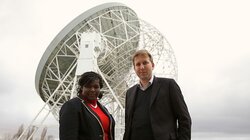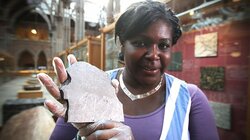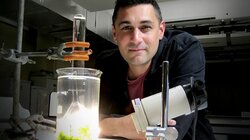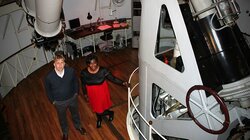Jupiter: Weather and Moons
Episode: 2014-02-09 | Airdate: Feb 9, 2014
New presenter Dr Maggie Aderin-Pocock joins Dr Chris Lintott in a revamped line-up that launches the show in its new home on BBC Four.
The main subject is Jupiter, the largest planet in our solar system and particularly bright in the night sky during the British winter. What makes Jupiter's extraordinary weather? Its coloured bands and iconic 'eye' are visible manifestations of an extremely violent atmosphere. Chris and Maggie are joined by guest reporter, physicist Dr Helen Czerski, to explain why Jupiter looks so extraordinary.













